Focus
Going through Emmanuel Lefrant's work chronologically is like visiting a natural history museum: from the prebiotic soup photographed with a microscope, to the stars visible only through a telescope. We pass through a form of paroxysmal realism, which acts as an instrument of criticism of every naturalistic documentary record. A photochemical revelation of the ‘real’, in which abstraction and documentation are both the products of a form of Platonic research into the essence of things.
F.R.
BUY TICKET
Emmanuel Lefrant
66 minsGoing through Emmanuel Lefrant's work chronologically is like visiting a natural history museum: from the prebiotic soup photographed with a microscope, to the stars visible only through a telescope. We pass through a form of paroxysmal realism, which acts as an instrument of criticism of every naturalistic documentary record. A photochemical revelation of the ‘real’, in which abstraction and documentation are both the products of a form of Platonic research into the essence of things.
F.R.
BUY TICKET
Sat 28 May
22:00 - 23:30 / ACUD KINOEmmanuel Lefrant
UNDERGROUND
France, 2001, 8' 00, 16mm, sound

Roland Barthes used to say «Aptly named film (pellicula), is but skin without a gape, without an opening, without a wound». With direct cinema, this formula, which became axiomatic because of the flawless imagery found in traditional cinema, no longer verifies. The 'smooth' film of the image is metamorphosed into fragile skin. Contrary to scientific cinematography from the beginning of the century, the micro-organisms are not re-created (by being filmed) but rather reproduced directly on the film (frozen on the film strip, but made to move on screen by the driving mechanism of the projector). The point is, paradoxically, to reach the extreme of realistic representation by way of an abstract image, by actually showing the micro-organisms, with no other mediator than the lens of the projector. Every single curve, every single asperity that leaves a mark on the film is the movement of time itself, a trace of its passage. The 'secret forms' of emulsion are unveiled, and emphasise the materiality of celluloid, and the processes that reveal the image. Proposing further evidence that film material is not inert, this film was made by literally burying pieces of black film during different periods of time and in different kinds of grounds (soil, snow, mud, etc.).
Emmanuel Lefrant
ALL OVER
France, 2001, 7' 00, 16mm, sound
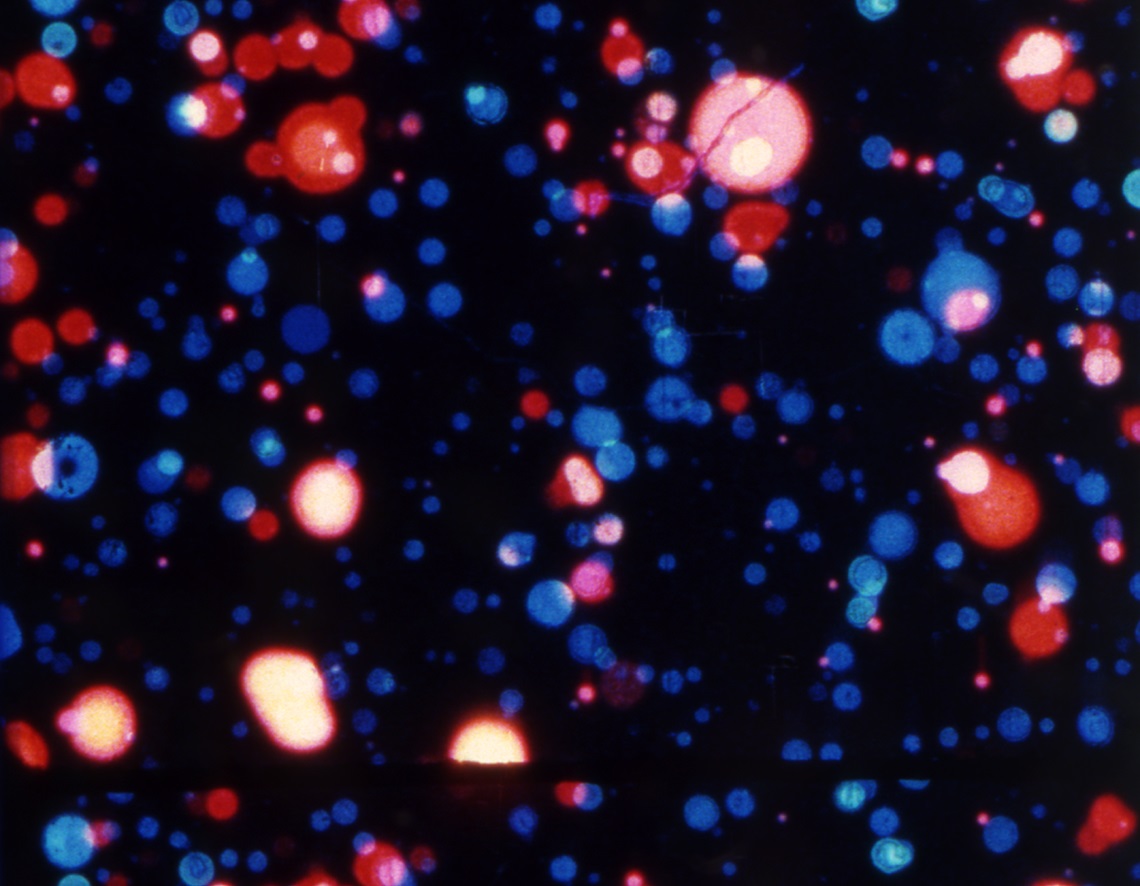
Prior to any other treatment, the emulsion is covered with layers of chemical products, resulting in a black filmstrip. "The black leader can be anticipated as Malevitch's white painting: a space in which everything is possible, the space of absolute potentiality and virtuality." This is because cinema, contrary to painting, gives light to its own image, via the lamp projector. This is not about covering a blank surface with forms and colours since they already exist on the black film. Whilst ALL OVER is a film made without "instrumentation" (like a camera), it also differs from direct films in that the film remains untouched by any tool (not even the hand). As in dripping, materials and colour are spontaneously laid down on the film in semi-controlled gestures, which create a shower of colored dots. The soundtrack functions according to the same principle: the sound, in all its expressions, is formed using one single formal element.
Emmanuel Lefrant
STILL FRAMES
France, 2002, 3' 00, 16mm, silent
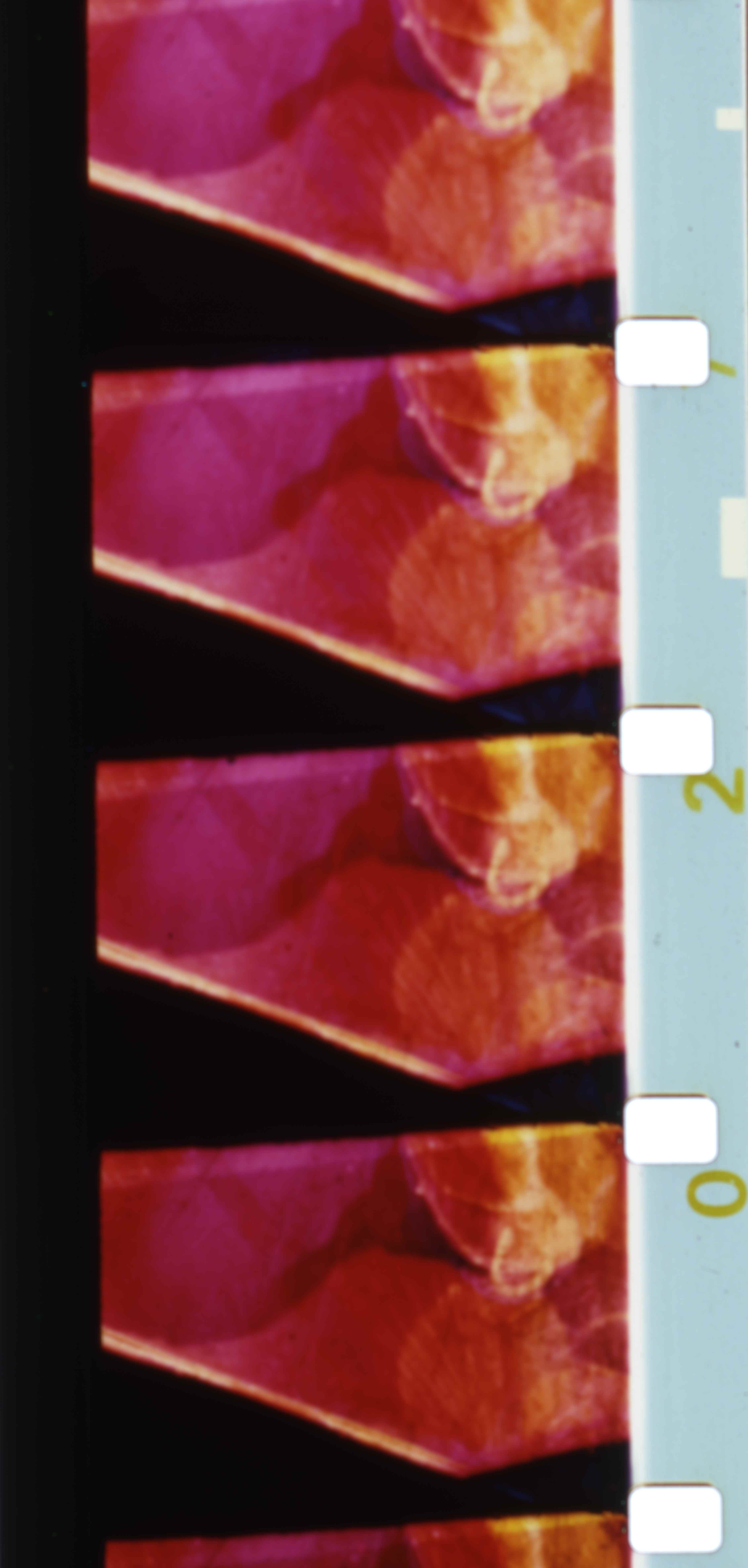
STILL FRAMES is a laboratory film, conceived whilst Lefrant was finishing SARABAN. Indeed the two films were produced from the same images. The aim was not only to prove that the same source of image can generate two different films but also to highlight the incidence of light on colour.
Emmanuel Lefrant
SARABAN
France, 2002, 6' 00, 16mm, sound

Work on speed, rhythms, flickers and colour, whose main tendency should be to serve Expression as fully as possible». The idea for this film was born during experiments on the film strip, with the Nominoë collective.
Emmanuel Lefrant
OVERALL
France, 2006, 5' 00, 16mm, sound

«Whilst the greater number of our nocturnal visions are perhaps no more than faint and fantastic reflections of our waking experiences, there are still a certain remainder whose immundane and ethereal character permit of no ordinary interpretation, and whose vaguely exciting and disquieting effect suggests possible minute glimpses into a sphere of mental existence no less important than physical life, yet separated from that life by an all but impassable barrier.» H.P. Lovecraft, Beyond the Wall of Sleep OVERALL continues the project which began as ALL OVER. The creative process has become inverted since the primary material is now oil paint. The original film was painted with J. Pollock's dripping technique on a transparent film strip and then all colours were invented in the lab with a contact printer. The soundtrack was made using a signal processing environment called «Pure Data», calculating in real time the colour density of the image.
Emmanuel Lefrant
BLITZ
France, 2006, 6' 00, 16mm, sound

This is a deserted black space that one tries to fill in. To the point of becoming totally submerged in colour. One explores the chromatic circle, by turning around it meticulously. And by vertical unreeling, a process specific to cinema. BLITZ turns a page opened two years ago in Canada. Lefrant started to work on line patterns with the collective PHYLM, for a performance, and then for an installation. Once back in France, Lefrant re-explored this figure with the nominoë collective, and the performance LI[GHT]NES.
Emmanuel Lefrant
PARTIES VISIBLE ET INVISIBLE D'UN ENSEMBLE SOUS TENSION
France, 2009, 7' 00, 35mm, sound
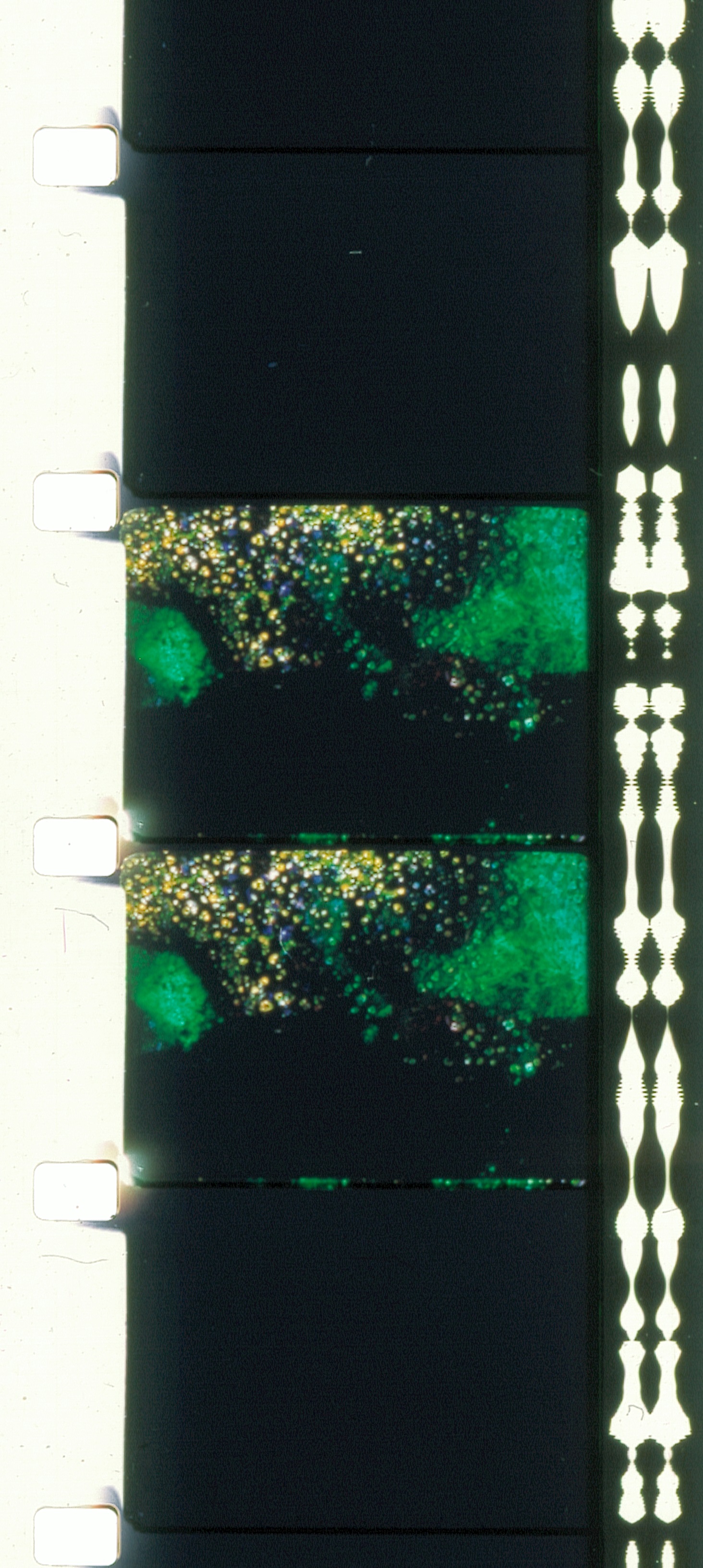
Africa, 2003: the mechanisms of memory.
Lefrant shot the image of a landscape and buried simultaneously a film strip in the same place where the sequence was shot: the emulsion, the victim of erosion, is thus subjected to biochemical degradation. The result of these natural processes of decay are then conserved in the state of their dissolution. Those two images, and their negative versions, are then entangled together thanks to double exposure and bi-packing techniques.
These landscapes are in fusion, it's the logic of a world that reveals itself. A bipolar world, where invisible takes shape with the visible, where the first dissolves itself into the second and vice versa.
Emmanuel Lefrant
LE PAYS DÉVASTÉ
France, 2015, 11' 30, 35mm, sound
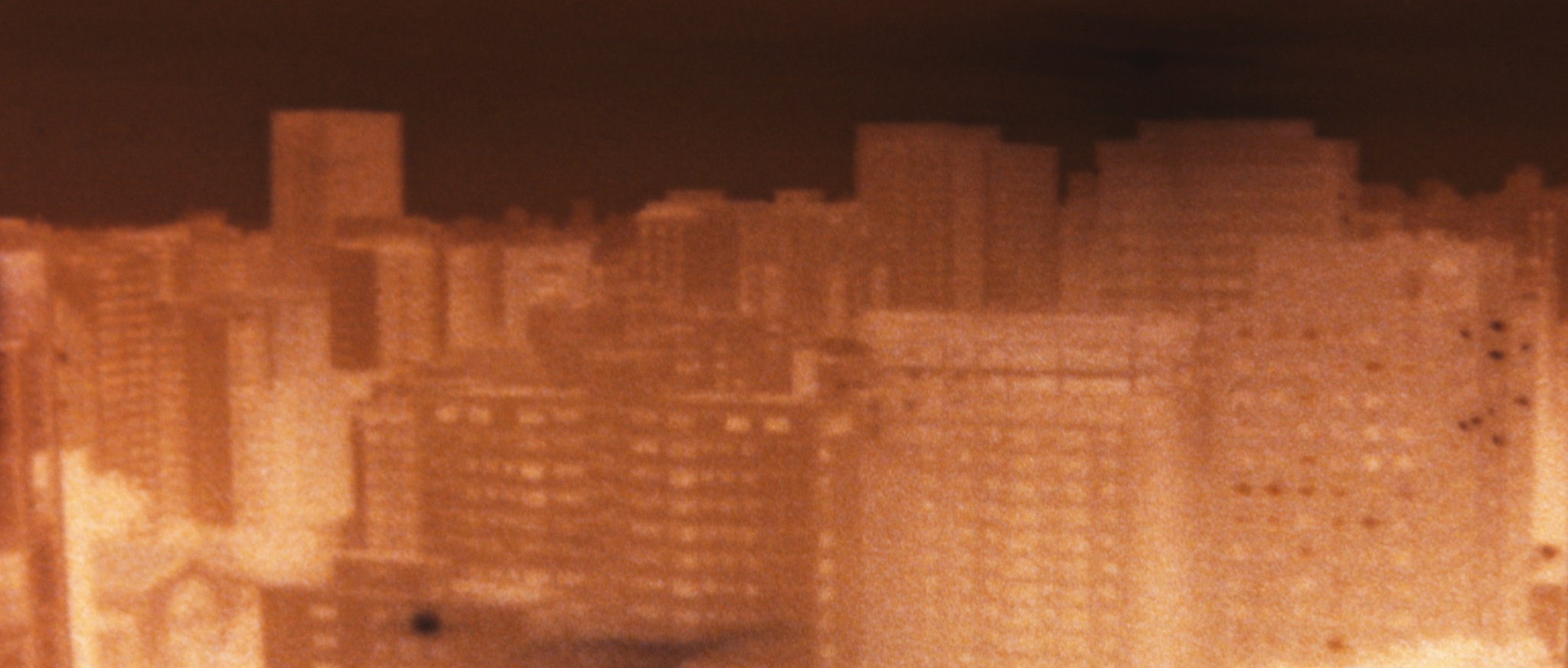
- What do you see? - A place not suited for human beings Le Pays Dévasté relates to the Anthropocene, the current geological age, viewed as the period during which human activity has been the dominant influence on climate and the environment.
Christopher Becks, Emmanuel Lefrant
I DON'T THINK I CAN SEE AN ISLAND
France, 2016, 4' 10, 35mm, sound
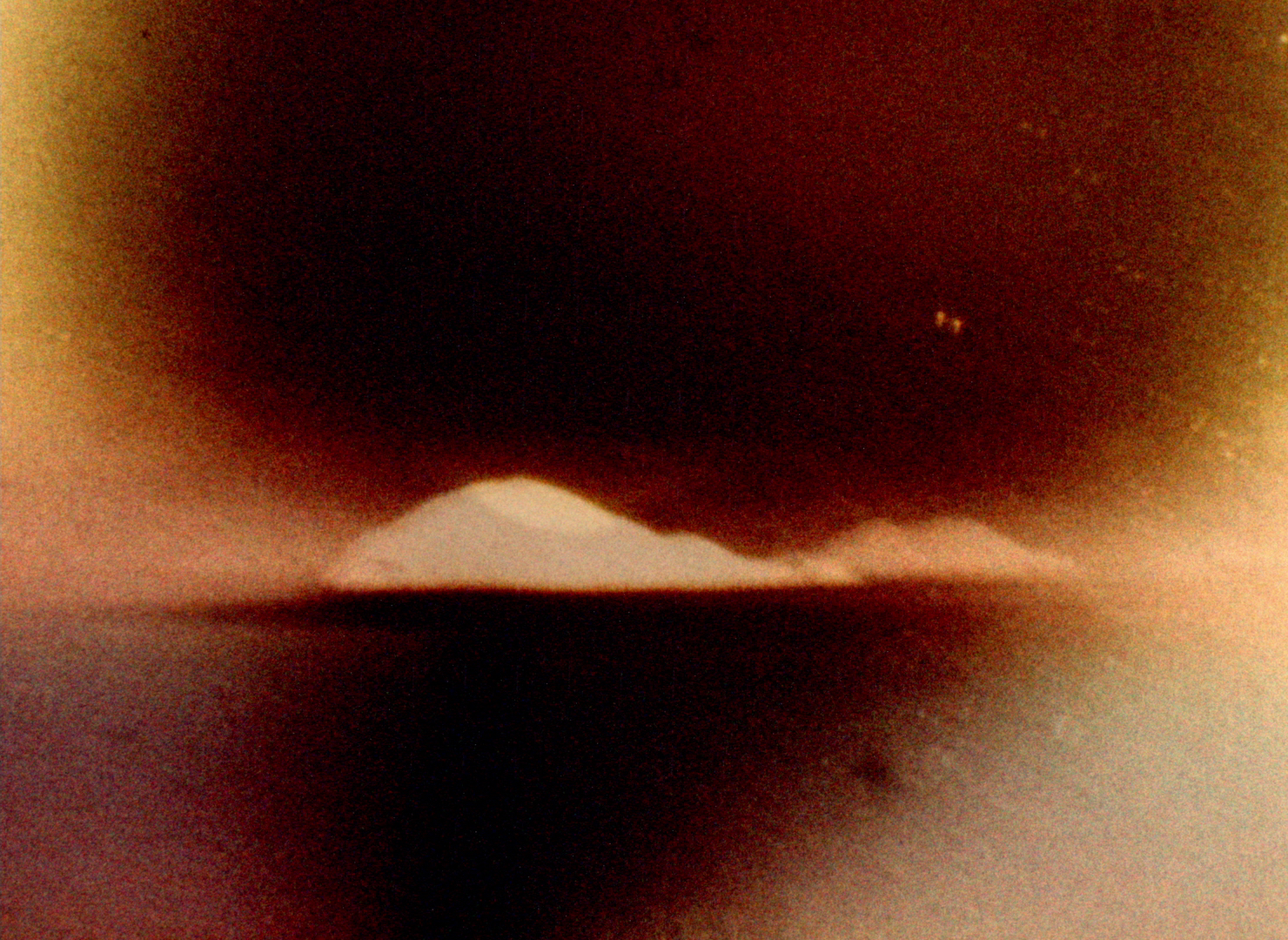
A Film of Symbolically Authentic Non-Euclidean Adventures.
Emmanuel Lefrant
PER UNA SELVA OSCURA
France, 2022, 8' 25, 35mm, sound, World Premiere

The revelation of an image, which progresses to the heart of things, of their textures, of their depth, seized in an incoercible movement: that of a dystopia in progress. We see a primitive entity on the verge of cataclysm, an infinite flight forward, until the complete dissolution of all forms and figures. In which dark forest have we lost our way?
SCHEDULE 2022
Fri 27
18:30 / ACUD BACKYARD
Festival Opening
19.30 / ACUD KINO
Selection #1
In and Out Window
22:30 / ACUD STUDIO
Film Performance
Gaelle Rouard
Sat 28
11:00 / ACUD STUDIO
Workshop
Experimental Film Archive
13:00 / ACUD BACKYARD
Occulto presents
Publishing Matters
15:00 / ACUD STUDIO
Selection #2
Body Configurations
17:00 / ACUD STUDIO
Selection #3
Shipwrecks
20:00 / ACUD KINO
Focus
Light Cone 40th Anniversary
Part1
22:00 / ACUD KINO
Focus
Emmanuel Lefrant
Sun 29
13:00 / ACUD BACKYARD
Occulto presents
Publishing Matters
18:00 / ACUD KINO
Selection #4
Sensitive Remains
20:30 / ACUD KINO
Focus
Light Cone 40th Anniversary
Part2
22:30 / ACUD STUDIO
Film Performance
Tomonari Nishikawa